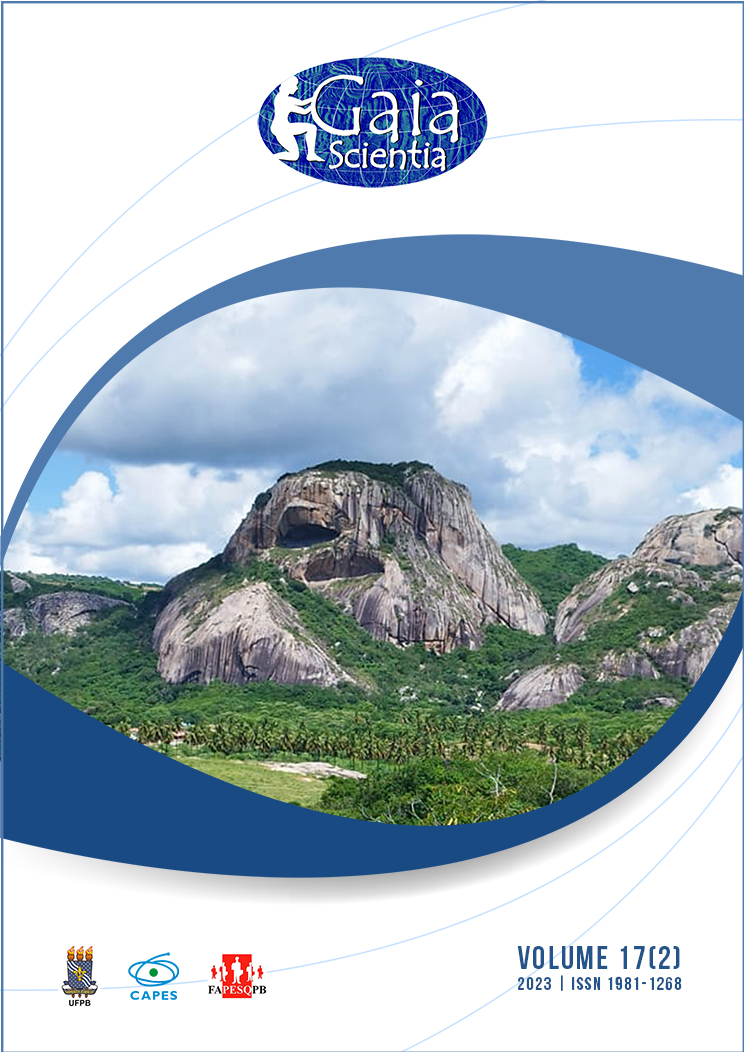Analysis of deforestation and flood susceptibility in the Pirarara River watershed in the municipality of Cacoal in Western Amazonia
DOI:
https://doi.org/10.22478/ufpb.1981-1268.2023v17n2.66889Abstract
Flooding affects hundreds of families in the neighborhoods affected by the waters of the Pirarara River in the urban area of the municipality of Cacoal - RO. The aim of the research was to analyze morphometry, deforestation and identify areas susceptible to flooding. The morphometric analysis was carried out by processing vector and matrix data using free software. Landsat 5 and Landsat 8 images were used to produce deforestation maps. Data was collected from Hidroweb for rainfall and elevation surveys. The Height Above the Nearest Drainage (HAND) model was used to produce flood susceptibility maps. The morphometric results indicate a low risk of flooding. The region experienced urban expansion of 6.13% and anthropized areas of 24.04% between 1984 and 2020. The average annual historical rainfall is 1901 mm. In the 2022 flood, there was 113.4 mm of rainfall in one day and an accumulation of 160 mm over the week, half the accumulation in February, with a maximum height of 677 cm. The HAND model estimates that 2% of the basin area is highly susceptible to flooding, 53% in areas of medium susceptibility and 45% in areas of low susceptibility. The research contributes to the Sustainable Development Goal (SDG13).










